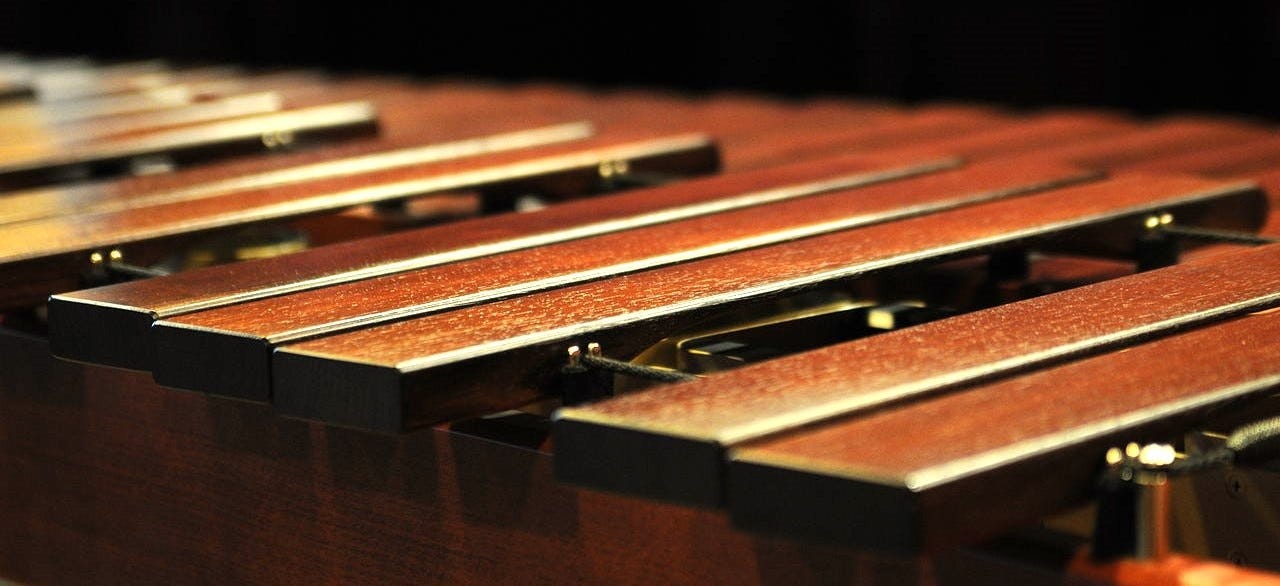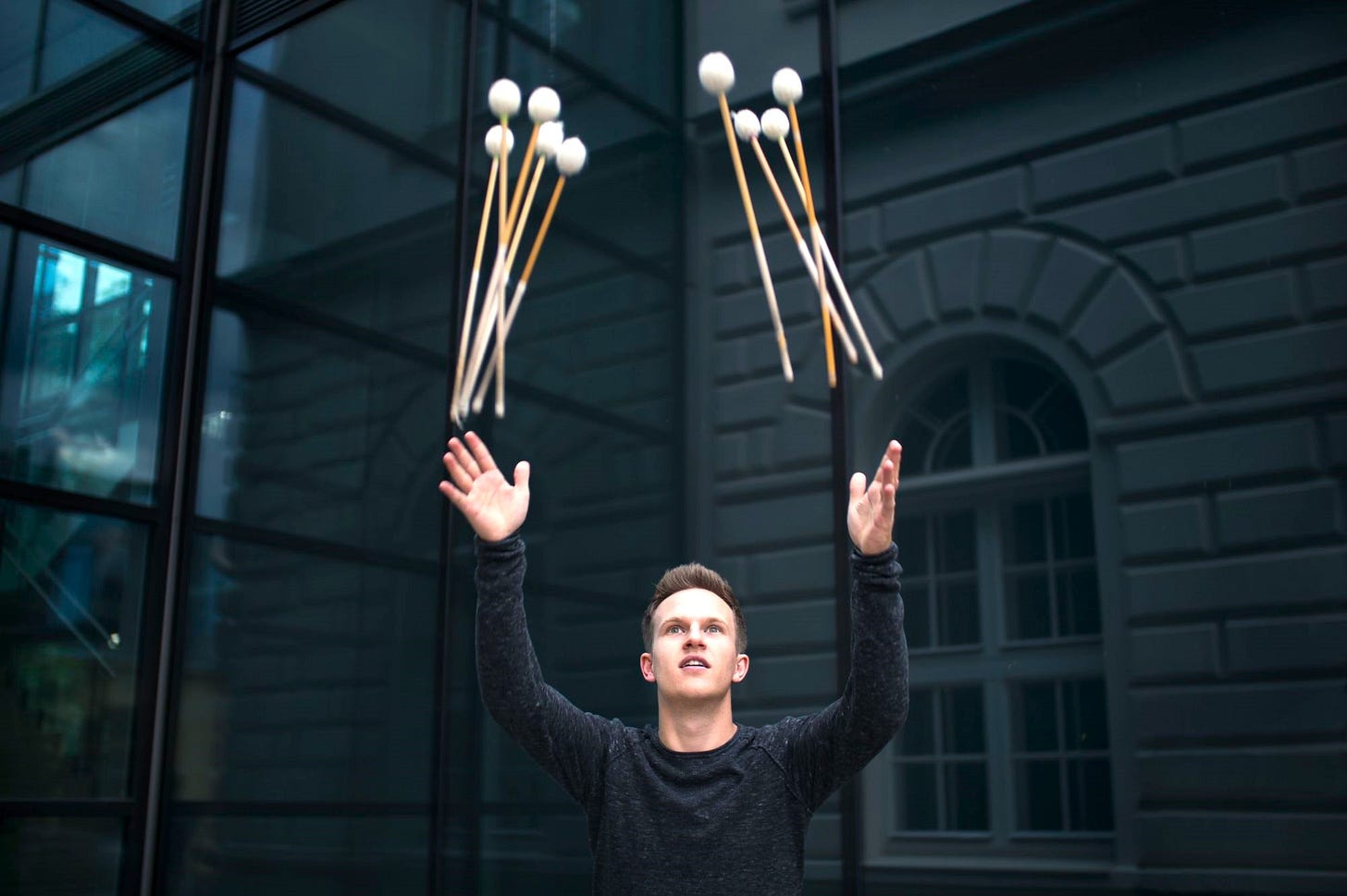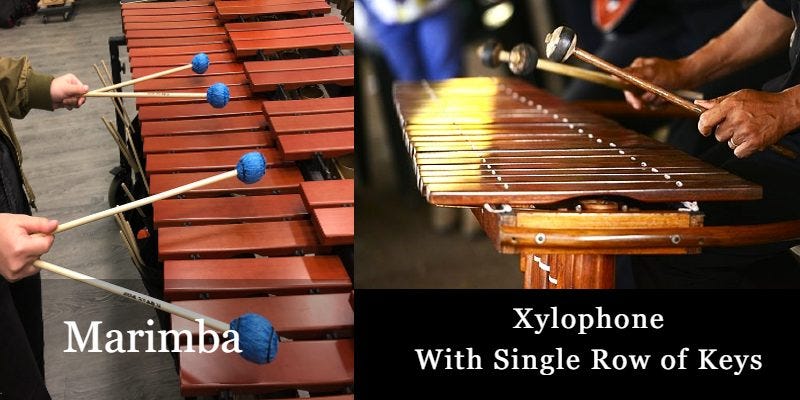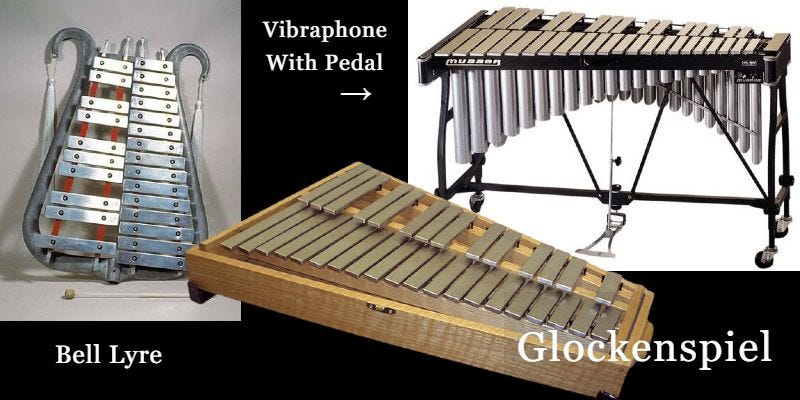The three minutes you take to watch this exciting video of an Austrian musician named Christoph Sietzen will probably be the best three minutes of your day. As the title says, he is an astonishing talent.
He was born in Vienna in 1992 and began playing musical instruments at the age of four. It was only up from there.
He’s now 31, but he’s won so many awards and competitions I don’t have time in a short space to name them all. Here’s a link to his impressive curriculum vitae, but you can learn the most about him from the description of his performance ability by a music critic:
"Awesome technique, unrelenting intensity, tremendous power, breath-taking speed, idiosyncratic presence and a profound musicality.”
You’ll see what the critic means in the video below.
Percussion Dynamism
Sietzen is a percussionist, which may need some explanation. String instruments require strumming or plucking of strings; wind instruments make music when you blow into them; but percussion instruments make sound only when you hit them!
The percussion family is a wild bunch of diverse individuals who would be quite at home in any modern DEI program: drums of every sort imaginable, hand bells, cymbals and triangles, cowbells and rattles, wood blocks and claves (two sticks you hit together), tambourines, maracas, gongs, chimes, and castanets.
Just hit, strike, move, or shake them, and you have your sound.
I’m also fascinated with those long, hollow gourd-like things with the loose pieces inside that make a kind of waterfall sound when you turn them over, Oh, and don’t forget those narrow tubes with ridges that make a rasping sound when you run a stick up and down the side.
Percussion instruments always remind me of the Dr. Seuss instruments in the Who village where the Grinch stole Christmas: you know, the Whowonkas, Jingtinglers, Trumtookas, Whohoopers, Blumbloopas, Gardookas, Floofloovers, Slooslunkas, and Tartookas.
Who could forget those?
Percussion that Sings
And then there’s the keyboard percussion group. Even though you may violently strike them, they never take it personally. In fact, they sing when you do!
They can all be classed under the generic term xylophone, but as you might imagine, there is quite a diversity among them too. (Xúlon in ancient Greek means “wood”, by the way; phoné means “sound”.)
To break it down to its simplest formulation, these percussion instruments divide into two categories: wooden keys and metal keys.
Wooden Keys
The Xylophone (Simple/Primitive); Generally consists of a single keyboard with bars that correspond to the white notes on a piano. Its sound is one octave higher than the written music, and it has a range of one to three octaves.
The Marimba: This instrument “upgraded” the simple Xylophone by adding a second range of keys corresponding to the black keys on a piano. The keys also have tubes called resonators underneath them to amplify the sound, as we will see in the video. It’s a highly versatile instrument and the big concert Marimbas can have a range of five octaves.
And by the way, did you know that the Marimba was declared the national instrument of Guatemala in 1821? Wow!
Metal Keys
The Glockenspiel: German in origin, it is a simple keyboard of aluminum or steel bars which adds tremendous color when it is played in orchestras or bands.
The Bell Lyre: It is a Glockenspiel-type instrument almost exclusively used in marching bands. The player holds it upright with one hand and uses a mallet with the other to strike the notes.
The Vibraphone: This marvelous instrument is essentially a marimba with metal keys. It contains swirling discs in the resonator tubes that create a vibrato sound controlled by a foot pedal. It’s a favorite of jazz musicians but can be a bit schmaltzy when used in a carnival!
Sheer Mastery
Which brings us to Christoph Sietzen, master percussionist.
In this amazing 2:43 video, Sietzen plays both the Marimba and the Vibraphone, which are positioned in right angles to each other as he shuffles back and forth between them.
The two types of keyboards provide a wonderful contrast of sounds, colors, and unique “personalities” for musical instruments.
And Seitzen plays like a controlled storm that descends upon those unsuspecting bars of wood and metal to extract every ounce of sound and fury from them.
Enjoy!
---
If that bit of percussion whets your appetite for more, then don’t miss the Sacred Windows piece about a Swiss drum corps that will knock your socks off.
—
Photo Credits: Christoph Sietzen; Feature keyboard; Marimba; Xylophone; Bell Lyre; Glockenspiel; Vibraphone.








